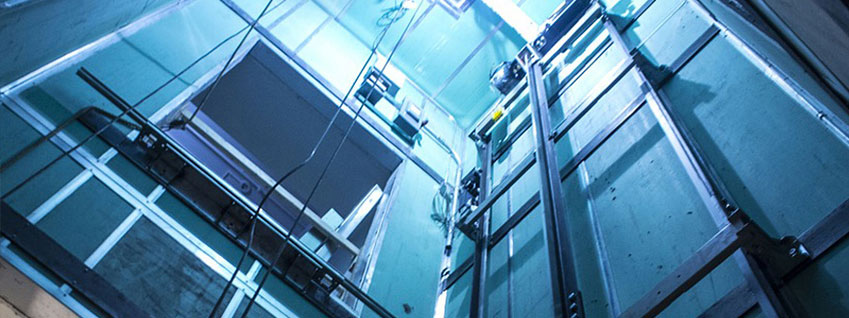Locate Reliable Lift Repair Near Me for Rapid and Affordable Solution
Locate Reliable Lift Repair Near Me for Rapid and Affordable Solution
Blog Article
Exploring the Globe of Lifts: Common Concerns Faced by Various Lift Devices
As we browse with the upright transportation systems of modern-day structures, elevators attract attention as a crucial part of our lives. Nonetheless, behind their seamless procedure exists a globe of detailed devices that can sometimes encounter difficulties. From hydraulic elevators to grip systems and machine-room-less designs, each lift type comes with its collection of usual issues. Recognizing these difficulties is critical for making certain the smooth performance of these crucial systems. Let's explore the intricacies that underlie the operation of elevators and the prospective problems that can occur, clarifying the intricate internet of lift systems.
Hydraulic Lifts
Hydraulic lifts, commonly preferred for low-rise buildings, utilize fluid pressure to manage the activity of the lift cars and truck (lift repair companies). This mechanism includes a hydraulic pump pressing oil into a cylinder, creating the lift to relocate the desired direction. While hydraulic elevators are recognized for their smooth and silent procedure, they do include their very own set of usual problems
One prevalent trouble with hydraulic lifts is oil leak. Furthermore, concerns with the control system, such as faulty valves or a malfunctioning pump, can trigger interruptions in the lift's activity.
Regular maintenance and timely repair services are important to ensure the smooth performance of hydraulic elevators. By attending to these usual issues proactively, building owners can reduce downtime and make certain the safety and effectiveness of their vertical transport system.
Traction Lifts
When thinking about upright transportation systems in structures, another common type in addition to hydraulic lifts is the traction elevator. Traction elevators operate making use of a system of ropes and counterweights that relocate the lift cars and truck by gripping onto the hoist ropes. This mechanism permits smoother and faster vertical transportation compared to hydraulic systems.
Among the common concerns encountered by grip lifts is rope wear. The consistent activity of the ropes within the grip system can result in tear and wear with time, potentially creating the elevator to breakdown or come to be risky for use. Routine evaluations and upkeep of the ropes are necessary to make certain the elevator's appropriate performance and safety and security.
An additional concern that traction elevators may encounter is connected to the control system. Issues with the control system can lead to concerns such as erratic activity, delays in response times, and even complete closures. Routine testing and maintenance of the control system are essential to stop such issues and make certain the elevator's integrity.
Machine-Room-Less (MRL) Elevators

One of the vital parts of MRL elevators is the portable gearless traction equipment that is installed within the hoistway. This device successfully drives the elevator car without the demand for bulky tools found in reference traditional traction lifts. In addition, MRL lifts usually use a counterweight system to stabilize the automobile, more improving their energy performance.
In spite of their benefits, MRL elevators may encounter challenges associated with repair and maintenance as a result of the restricted space for equipment installation. Availability for servicing elements within the shaft can be limited, needing specialized training for service technicians. Correct upkeep timetables and routine assessments are vital to make certain the continued smooth procedure of MRL elevators.
Overloading and Weight Limit Issues
Are lifts equipped to deal with excess weight lots efficiently and securely? Overloading and weight limit concerns are important worries in elevator procedures. Elevator manufacturers layout lifts with details weight capabilities to make sure passenger safety and tools durability. Going beyond these weight limits can bring about various issues, consisting of mechanical failures, delays, and safety threats.
When elevators are strained, it puts extreme pressure on the electric motor, cable televisions, and other components, potentially triggering malfunctions or breakdowns. Safety and security systems such as sensors and overload sensing units remain in location to avoid lifts from relocating if they detect excess weight. In addition, surpassing weight limitations can lead to enhanced energy consumption and wear and tear on the elevator system.
To alleviate overloading concerns, constructing managers need to prominently present weight limits in elevators and educate owners on the value of sticking to these limitations - lift repair companies. Regular maintenance checks by qualified specialists can also aid ensure that elevators go to these guys are running within secure weight criteria. By addressing overloading and weight limit concerns proactively, building proprietors can improve elevator safety and security and effectiveness
Electrical System Failings
Going beyond weight limits in elevators can not just lead to mechanical problems however additionally potentially add to electric system failings within the lift framework. Electrical system failings are an essential issue in elevator operation, as they can create unanticipated shutdowns, breakdowns, or also safety and security risks.
Routine upkeep and assessments are critical to determine and deal with possible electrical problems promptly, ensuring the effective and secure procedure of lift systems. By adhering to weight limits and conducting regular electrical system checks, structure proprietors can minimize the risk of electrical failings in elevators.
Verdict

Hydraulic elevators, my company often preferred for low-rise structures, utilize fluid pressure to control the activity of the lift car.When taking into consideration upright transportation systems in structures, another usual kind aside from hydraulic lifts is the grip lift. Traction elevators operate using a system of ropes and counterweights that move the elevator vehicle by gripping onto the hoist ropes. Unlike traditional elevators that require a separate machine room to house the equipment, MRL elevators integrate most of the components within the shaft, getting rid of the demand for a devoted maker area.In verdict, lifts face common concerns such as hydraulic breakdowns, traction system failings, and electric system issues.
Report this page